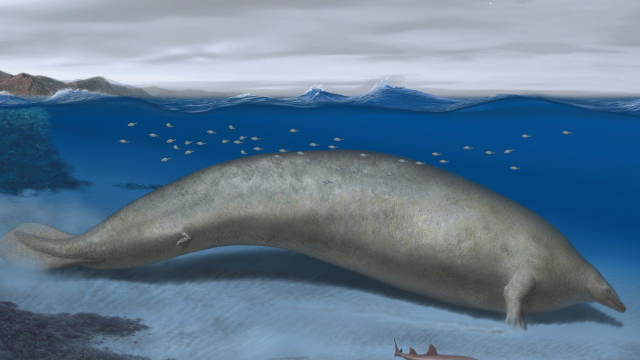What is Perucetus colossus?
In a groundbreaking discovery, paleontologists have unearthed the fossilized remains of a massive ancient creature that roamed the coastal waters a staggering 40 million years ago. This newly discovered species, scientifically named Perucetus colossus, is believed to be a strong contender for the title of the heaviest animal ever to have existed on Earth.
Discovering Perucetus colossus
The remnants of Perucetus colossus were found in the Ica desert of southern Peru, shedding light on the distant past of Earth’s marine inhabitants. These fossils were discovered 13 years ago, but the painstaking preparation for study has only recently come to fruition, providing valuable insights into the prehistoric world.
Unseating the Blue Whale
For centuries, the blue whale held the record for being the largest animal in the world, boasting a skeleton more than 25 meters long and weighing approximately 4.5 tonnes. However, the discovery of Perucetus colossus challenges this long-standing belief. Named after its country of origin and its colossal size, Perucetus colossus could have easily surpassed the blue whale in both length and weight.
A Weighty Matter
Estimating the body mass of Perucetus colossus has been a significant undertaking. Researchers believe that fully grown adults of this species might have weighed anywhere between 85 to a jaw-dropping 340 tonnes. The density of their bones, unlike most whales, contributed to their substantial weight. This revelation has the potential to reshape our understanding of the largest creatures ever to have lived on Earth.
Adaptations and Limb Structure
Perucetus colossus boasted forelimbs that were likely used for walking on the seabed. Unlike modern whales, which primarily rely on lighter skeletons for swift movements and hunting agile marine creatures, P. colossus appears to have been a slower-moving scavenger in shallow coastal waters.
A Window into the Past
The discovery of Perucetus colossus provides a unique opportunity for researchers to study gigantism in early cetaceans, a group that includes dolphins, whales, and porpoises. Additionally, it has challenged previous assumptions by revealing that cetaceans achieved extreme body masses far earlier than previously believed, approximately 30 million years before the evolution of modern cetacean groups.
Month: Current Affairs - August, 2023
Category: Science & Technology Current Affairs


